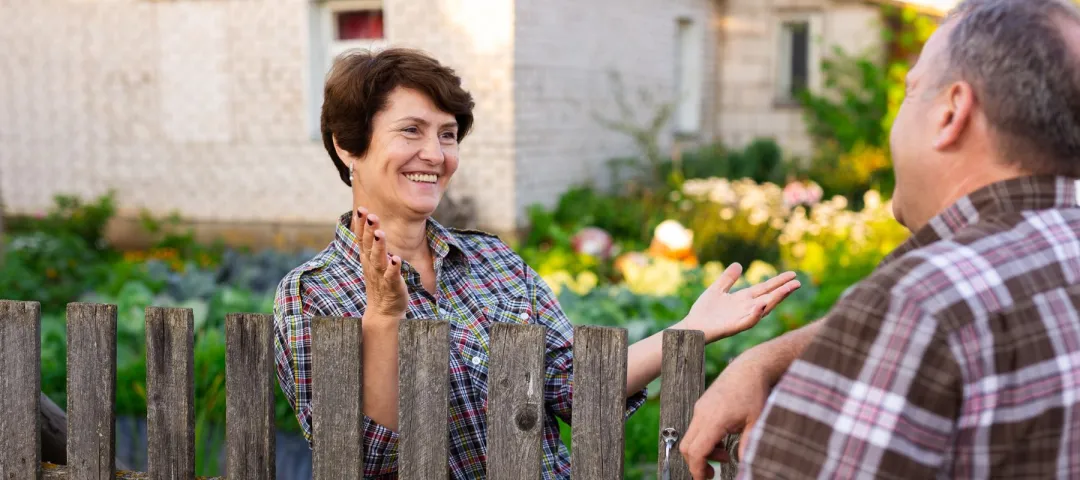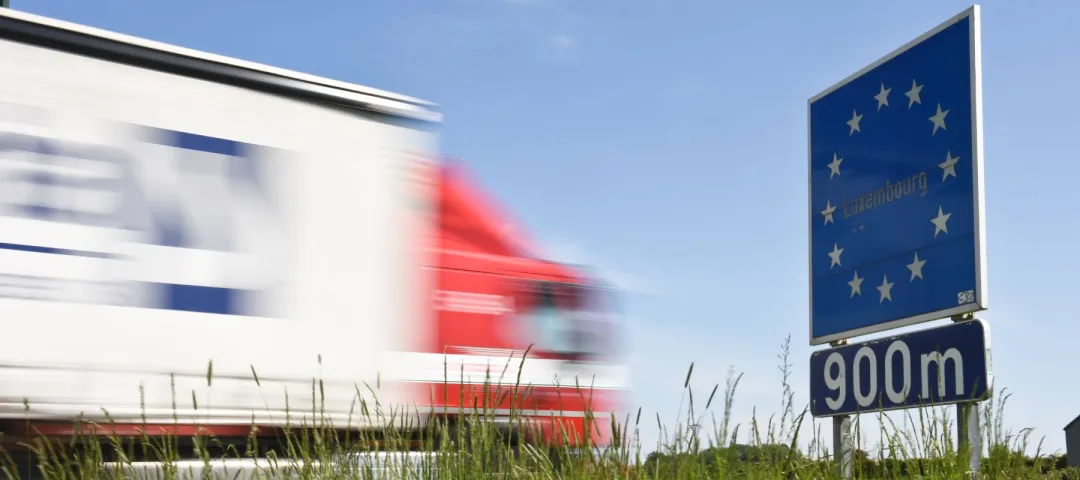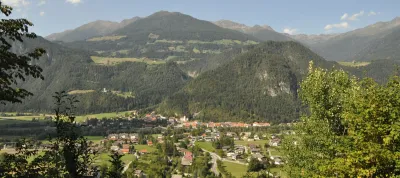LEADER pour la résilience et la sécurité des communautés
En discutant avec les parties prenantes du programme LEADER dans cinq pays limitrophes de la Fédération de Russie, nous avons découvert les ambitions de ce programme, sa mise en œuvre actuelle et son rôle dans la résilience et la sécurité des communautés.
En réponse aux récentes crises géopolitiques, les Groupes d’Action Locale (GAL) de certains pays ont développé des initiatives visant à accroître la résilience et la sécurité des communautés rurales locales, contribuant ainsi à une meilleure préparation aux crises. Pour en savoir plus, nous avons rencontré les autorités de gestion et les réseaux nationaux LEADER de cinq pays de la région de la mer Baltique : l’Estonie, la Lettonie, la Lituanie, la Finlande et la Pologne.
Laissez-nous vous guider à travers les ambitions de LEADER de ces pays, vous donner un aperçu de l'état des lieux de la mise en œuvre de LEADER et vous faire découvrir les activités des GAL LEADER en matière de résilience et de sécurité au niveau communautaire.
De grandes ambitions pour LEADER
La qualité de la vie rurale, les services, l'innovation, les personnes et les entreprises sont les thèmes clés des stratégies de développement local (SDL) de nombreux GAL dans cette partie de l'Europe.
En Estonie, LEADER devrait contribuer à développer un cadre de vie et un environnement commercial attractifs dans les zones rurales, ainsi qu'à développer des communautés rurales actives et cohésives. Sur la base du plan stratégique relevant de la PAC (CSP) estonien, les SDL peuvent se concentrer sur les grandes priorités suivantes : développer l'entreprenariat, autonomiser les communautés locales, les résidents et les futurs jeunes leaders, améliorer l'accès aux services, développer et mettre en œuvre des solutions respectueuses de l'environnement et du climat, et maintenir et promouvoir une image positive de la vie rurale, y compris la promotion des Smart Villages. Si une stratégie locale de développement contribue également aux objectifs du Fonds social européen+ (FSE+), elle comprend également une mesure distincte axée sur l'amélioration de la disponibilité et de la qualité des services de soins de longue durée et l'allègement de la charge que représentent ces soins, la garantie de la dignité humaine et le renforcement de l'inclusion sociale.
La Finlande vise à renforcer LEADER en tirant le meilleur parti des nouvelles mesures et des nouveaux mécanismes de soutien, en se concentrant principalement sur les petites entreprises et les start-ups rurales, ainsi qu'en améliorant et en renforçant le networking au sein de LEADER.
La Lettonie vise à créer de nouveaux emplois, à contribuer à une utilisation plus durable des ressources locales et à introduire des solutions numériques et innovantes. Elle vise également à préserver et à créer un cadre de vie et des services locaux de qualité grâce à LEADER afin de relever les défis ruraux, notamment le déclin démographique et le faible niveau d'entreprenariat par rapport aux zones urbaines.
La Lituanie entend élaborer une méthodologie pour évaluer la valeur ajoutée de LEADER et collecter les données de référence pertinentes à cette fin, sur la base des lignes directrices de la Commission européenne sur l'évaluation de la valeur ajoutée de LEADER (adaptées au contexte lituanien).
En Pologne, LEADER a pour principal objectif de construire une identité locale fondée sur l'engagement de la population locale et l'utilisation des ressources locales pour répondre aux besoins des communautés rurales, notamment par le biais de la connaissance, de l'innovation et des solutions numériques.

La mise en œuvre de LEADER est en bonne voie
Des projets locaux ont démarré dans les cinq pays conformément à leurs SDL approuvées.
En Estonie, les GAL ont publié les premiers appels à projets en février-mars 2024. Chaque GAL a pu décider du calendrier de ces appels en fonction des circonstances locales. Les candidats pouvaient soumettre leurs propositions via la plateforme numérique estonienne pour le financement du développement rural (e-PRIA).
Le programme Smart Villages en Estonie concerne 13 GAL et 24 villages. Il est axé sur les stratégies de Smart Village et les activités pilotes innovantes liées aux solutions numériques, aux initiatives vertes et aux services communautaires.
Le lancement des paiements forfaitaires pour les projets à petite échelle, destiné à accélérer le décaissement des fonds et à simplifier les procédures administratives, n'a pas été sans difficultés. Dans un véritable esprit de coopération et de dialogue, l'autorité de gestion, l'organisme payeur et les GAL organisent régulièrement des réunions conjointes afin de résoudre les problèmes rencontrés. Cet article fournit des informations supplémentaires sur la mise en œuvre des paiements forfaitaires dans le cadre de LEADER en Estonie.
Les GAL finlandais ont lancé leurs premiers appels à projets à l'été 2023 et, en mars 2025, 40 % des budgets des GAL pour 2023-2027 avaient été engagés pour 4 200 projets approuvés. Plus de la moitié de ces projets soutiennent les petites entreprises, suivis par le soutien aux investissements dans les zones rurales (services locaux, maisons de village, activités de plein air, environnement et climat), la coopération et les petits projets. 36 stratégies de Smart Villages ont également obtenu un soutien.
Les priorités stratégiques locales sont très variées, mais deux thèmes principaux se dégagent : les villages et l'inclusion sociale, d'une part, et l'entreprenariat, l'emploi et la vitalité, d'autre part. Parmi les autres priorités locales importantes pour les GAL figurent la nature, l'environnement, le climat et la durabilité, les services, le logement et le confort, ainsi que les enfants et les jeunes. Certains GAL ont également inclus le bien-être, les loisirs, la culture, l'innovation, les compétences, l'avenir des jeunes et le tourisme parmi leurs priorités stratégiques. Les thèmes transversaux les plus courants sont le développement durable, la coopération, la numérisation, les enfants, les jeunes, les personnes âgées, le changement climatique et l'environnement. L'innovation semble être un thème transversal à toutes les priorités.

En Lettonie, tous les GAL avaient lancé au moins un appel à projets à la fin de 2024 et, à la fin de mars 2025, 638 projets avaient été approuvés, pour un financement total de 12,2 millions d'euros, soit 21 % du budget LEADER.
Jusqu'à présent, le nombre de demandes de projets est inférieur à celui de la période de programmation précédente, en particulier dans les régions frontalières orientales. Ce modeste intérêt pour les demandes de financement peut s'expliquer par plusieurs causes, notamment le fait que les entreprises rurales se concentrent sur le maintien de leurs activités principales plutôt que de lancer de nouveaux investissements dans le contexte économique et sécuritaire actuel, la baisse des taux de soutien disponibles pour les start-up et le développement des entreprises, ainsi que les difficultés à obtenir les prêts nécessaires au cofinancement.
Afin d'augmenter le nombre de demandes, et sur la base des informations fournies par les GAL aux autorités nationales, l'autorité de gestion a réagi en modifiant le plan stratégique relevant de la PAC et en mettant à disposition des avances pour les projets LEADER. Dans d'autres cas, certains GAL ont modifié leurs stratégies afin de mieux répondre aux besoins des communautés, sur la base de leur expérience acquise lors des premiers appels à projets. L'analyse réalisée jusqu'à présent montre que les candidats se concentrent principalement sur des projets qui profitent à la population locale, améliorent leur territoire, créent des services de loisirs et favorisent les start-up et les entreprises non agricoles.
Les GAL lituaniens ont lancé les premiers appels à projets en février 2024, principalement sur la base de stratégies de développement local thématiques. Sur les 49 GAL lituaniens, 41 ont choisi de concentrer leur SDL sur un petit nombre de besoins locaux clés et d'objectifs stratégiques afin d'obtenir des avantages et une valeur ajoutée plus importants pour leurs territoires. Les principaux thèmes sélectionnés concernent l'économie, les services sociaux, le tourisme et la durabilité. Vous trouverez plus de détails sur les nouveaux appels LEADER en Lituanie dans cet article.
En Pologne, les GAL ont commencé à lancer des appels à projets en décembre 2024 et, fin avril 2025, 197 appels avaient été lancés dans 15 des 16 régions polonaises. Une région n'a pas encore lancé ses appels. Le montant de l'aide demandée dans le cadre de ces appels représente environ 9 % du budget LEADER. Les thèmes clés de ces appels sont le développement des entreprises et les activités économiques non agricoles, l'accès aux petites infrastructures publiques, l'accès aux services communautaires locaux, l'inclusion sociale (en particulier des personnes âgées, des jeunes et des personnes défavorisées) et la sensibilisation civique. Un nouveau système informatique de gestion des demandes est mis en place et amélioré en permanence par l'organisme payeur. Ce système couvrira à la fois la gestion et la mise en œuvre des stratégies locales de développement et tous ses éléments devraient être opérationnels d'ici la fin de 2025.
La sécurité et la résilience au cœur du bien-être des communautés

Compte tenu des crises géopolitiques actuelles, il est de plus en plus reconnu, tant au niveau national que local, qu'il n'y a pas de bien-être communautaire sans sentiment de sécurité, et qu'il n'y a pas de sécurité sans communautés résilientes bien préparées à gérer les situations de crise. Cette prise de conscience incite les GAL de certains États membres limitrophes de la Fédération de Russie à prendre des mesures au niveau local.
Les GAL lettons ont reconnu l'importance de la sécurité, y compris la sécurité alimentaire. Cela se traduit par plusieurs initiatives axées sur la capacité des territoires ruraux locaux à « se nourrir eux-mêmes ». Le projet « Vers une communauté autosuffisante », mis en œuvre en coopération par plusieurs GAL lettons (Aizkraukles rajona partnerība (chef de file), Bauskas rajona lauku partnerība, partnerība Kaimiņi et Preiļu-Līvānu novadu partnerība - Kūpā) au cours de la période de programmation 2014-2020, a recensé les ressources alimentaires dans les territoires spécifiques des GAL et encouragé le développement de circuits courts afin d'améliorer l'autosuffisance.
Le GAL Krāslavas rajona partnerība a soutenu l'organisation du forum au sommet « Sécurité et résilience communautaire dans la région frontalière orientale de la Lettonie », au cours duquel des représentants du ministère de l'intérieur, du ministère de la défense, du ministère de la culture, de l'Organisation transatlantique lettone et des collectivités locales de la région de Latgale en Lettonie ont discuté de la sécurité et de la résilience dans la zone frontalière et du rôle de la société civile dans la promotion de la résilience. Le GAL a également organisé plusieurs autres événements où la protection civile figurait parmi les thèmes principaux, notamment la réunion « Sécurité : fondement et objectif de la communauté », qui a réuni des experts et les communautés locales.
Le GAL Ludzas rajona partnerība promeut activement la résilience communautaire, par exemple en compilant et en publiant une liste d'organisations locales (ONG, groupes paroissiaux, centres culturels, etc.) avec leurs coordonnées, favorisant ainsi la coopération communautaire. Il a également créé une rubrique « Sécurité » sur son site internet, qui répertorie les contacts et les informations utiles à la municipalité de Ludza pour améliorer la sécurité et les mesures à prendre en cas d'urgence. Le projet « La sécurité dans la zone frontalière de l'UE et de la Lettonie dans la municipalité de Ludza commence avec chaque citoyen », mis en œuvre avec le soutien du ministère de la défense, comprenait des forums et des discussions avec les citoyens locaux dans 25 territoires administratifs de la municipalité de Ludza.
En Finlande, le thème de la « préparation » figure clairement parmi les priorités clés des GAL : la base de données des projets de développement rural finlandais recense 131 projets LEADER lorsque l'on effectue une recherche avec ce mot-clé.
Par exemple, le projet « Villages sûrs au quotidien à Hollola » vise à améliorer les modèles fonctionnels qui favorisent la sécurité et la résilience dans les villages, non seulement pour les résidents permanents, mais aussi pour les résidents estivaux, les touristes et les visiteurs occasionnels. Des soirées villageoises, des workshops, des revues et des enquêtes sont organisés, impliquant les villages et les autorités locales, ainsi que les résidents non permanents du village de Laatia. Le projet met en place une équipe de sécurité villageoise et élabore un plan pour faire face aux situations d'urgence liées aux tempêtes, aux coupures d'eau, aux inondations, aux incendies et à d'autres circonstances. Il élabore également un guide de sécurité pour les événements et un modèle de plan de secours pour les événements villageois. La participation des populations locales à la planification des opérations, à la formation et à la communication est essentielle au projet.
De même, le projet « Un avenir sûr dans les villages » repose sur la reconnaissance du fait que la sécurité des villages et la préparation aux crises sont essentielles au bien-être et à la résilience des communautés locales. Il vise à améliorer la capacité des communautés à faire face à diverses situations de crise en sensibilisant la population, en élaborant des plans de sécurité et en renforçant les compétences des habitants en matière de premiers secours, de gestion des crises et de sécurité incendie. Le projet comprend le recensement des équipements pertinents (qui seront achetés ultérieurement), des mesures visant à améliorer l'équipement des villages et le développement de canaux de communication (par exemple, site internet de l'association du village, groupes sur les réseaux sociaux), ainsi que la formation et la coopération avec les autorités locales. Le projet sera mis en œuvre en collaboration avec les villages de Kangosjärvi, Ylimuonio, Kajanki, Särkijärvi, Olos, Kerässieppi et Jeris.
Ressources supplémentaires
Si vous souhaitez en savoir plus sur la mise en œuvre de LEADER dans l'UE, consultez notre récent article sur l'état d'avancement des nouveaux appels LEADER en Autriche, en Italie et en Lituanie.
La newsletter LEADER et la newsletter du Réseau européen de la PAC vous fournissent régulièrement des informations et des témoignages issus du terrain. Abonnez-vous, faites passer le mot et suivez @EUCAPNetwork sur les réseaux sociaux pour recevoir les dernières actualités !
Les informations clés sur LEADER sont disponibles dans la section dédiée du site internet du Réseau européen de la PAC. L'annuaire des GAL comprend déjà 1 825 GAL opérationnels dans l'UE (sur 2 600 sélectionnés) et est mis à jour régulièrement avec les informations fournies par les autorités de gestion.
Vous pouvez également explorer la section du site internet consacrée à la coopération transnationale (CTN) LEADER, qui est également mise à jour en permanence.
